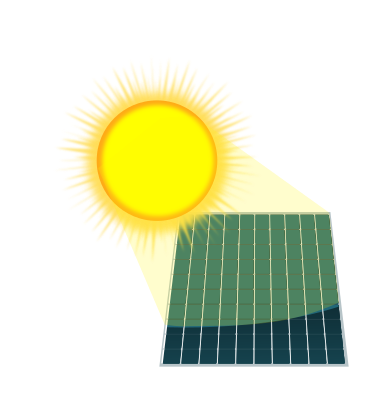Researchers at Martin Luther University Halle-Wittenberg (MLU) have discovered a new method to increase the efficiency of solar cells by a factor of 1,000. The team of scientists achieved this breakthrough by creating crystalline layers of barium titanate, strontium titanate, and calcium titanate, which were alternately placed on top of one another in a lattice structure.
That article - and especially the title - seem misleading. To quote (emphasis mine):
The result surprised even the research group: compared to pure barium titanate of a similar thickness, the current flow was up to 1,000 times stronger, despite the fact that the proportion of barium titanate as the main photoelectric component was reduced by almost two thirds.
I am sure this is exciting and very important research though.
And this is the next paragraph
Bhatnagar explained, “The interaction between the lattice layers appears to lead to a much higher permittivity - in other words, the electrons are able to flow much more easily due to the excitation by the light photons.” The measurements also showed that this effect is very robust: it remained nearly constant over a six-month period.
I don’t get why ya think anything here is misleading
Its like burning magnesium oxide alone vs magnesium oxide+iron oxide. Yeah they both burn but one produces 1000x more heat
Because the title says “1000x more powerful than existing panels”. The article clarifies that this is existing barium panels, but the title (I would argue misleadingly so) does not clarify that they aren’t referring to existing silicone solar panels.
Especially misleading because of the use of the word “existing” because it sounds like they’re referring to something that has made it out of a lab, but I’d wager 99.99999+% of people have never seen an “existing” barium solar panel.
A less misleading title would be something like:
Experimental barium solar panel 10000x more efficient than past attempts, possibility of performance parity with silicon in sight
Or some such nonsense. You could move the second half to a subtitle and still be much clearer and less misleading than the original in title alone.
compared to pure barium titanate of a similar thickness, the current flow was up to 1,000 times stronger
This says noting of efficiency compared to standard solar panels. Seems misleading at best.
The press release is from 2021
https://pressemitteilungen.pr.uni-halle.de/index.php?modus=pmanzeige&pm_id=5272
Silence since then.
Link to the study:
https://www.science.org/doi/10.1126/sciadv.abe4206
Edit: I skimmed through the study and their premise is to combine 3 crystals and break the linearity of the cristals to get a better response and better responsivity over the whole bandwidth of the light spectrum. It seems to be stable at a wide range of temperatures.
Issue is, they broke (or combined ?) the cristals with a microscopic needle but that isn’t feasible for mass adoption, so they speculate that some rust process might be the best approach to try.
I’m no scientist and it’s likely very false what I stated, but I think the premise is that we need to find ways to create panels with broken up cristals to give them more power.
Thanks for catching that. Unfortunately seems fairly common with a lot of these projects for “new” technologies ,sometimes due to funding.
“The result surprised even the research group: compared to pure barium titanate of a similar thickness, the current flow was up to 1,000 times stronger…”
so this offers the possibility of barium titanate PV cells that may be marginally more efficient and less expensive than existing silicon PV cells.
seems to be another “in a few years” tech that, while welcome, probably does not deserve the clickbait headline.
“The result surprised even the research group: compared to pure barium titanate of a similar thickness, the current flow was up to 1,000 times stronger, despite the fact that the proportion of barium titanate as the main photoelectric component was reduced by almost two thirds.”… So not actually 1000x better than current technology, just 1000x compared to pure barium titanite. Garbage clickbait, but “clever technique applied to ineffective solar cell technology scrapes 1% efficiency when used in UV spectrum” does not have the same appeal.
Damn, headline got me excited for a few moments and then I get into the comment section and be feeling depressed again.
a really good solar panel has a efficiency of 30%, idk how can you 1000x that, math doesn’t add up
Thank you. This has been addressed by previous commenters.
i see, title is clickbaity
20,000% efficient? Cool. Mr. Boltzmann and Mr. Einstein may want to have a word, though.





